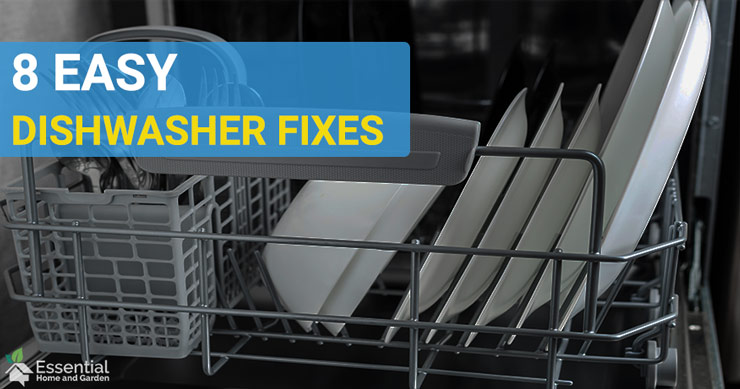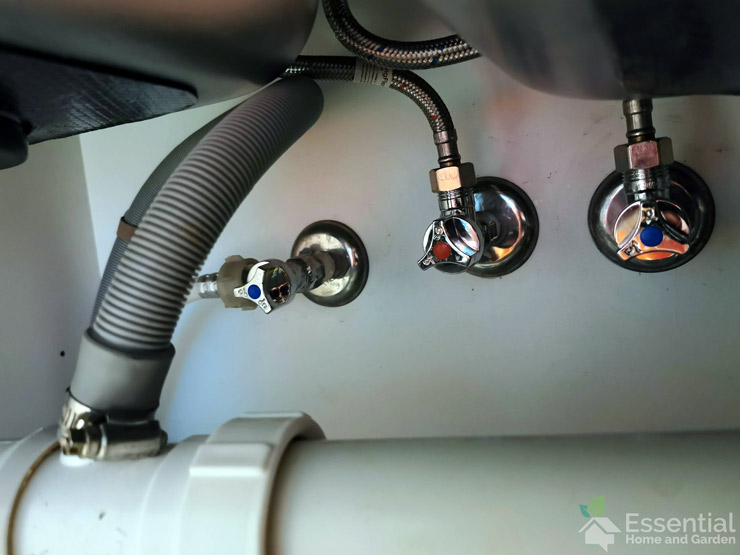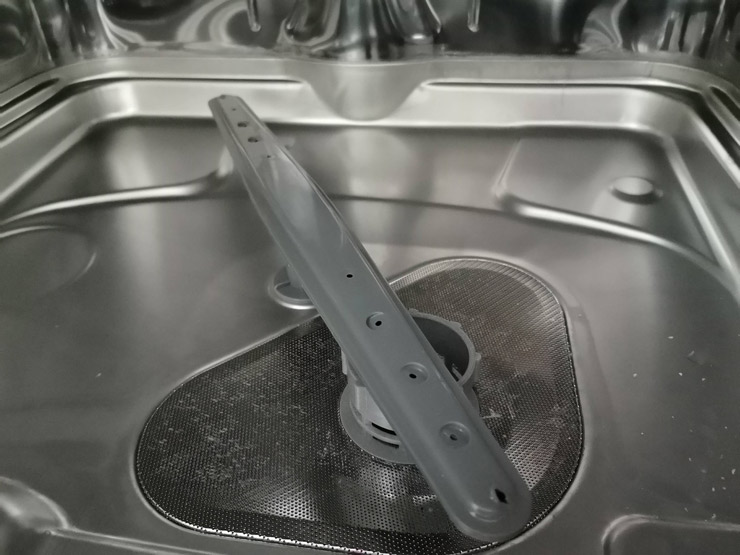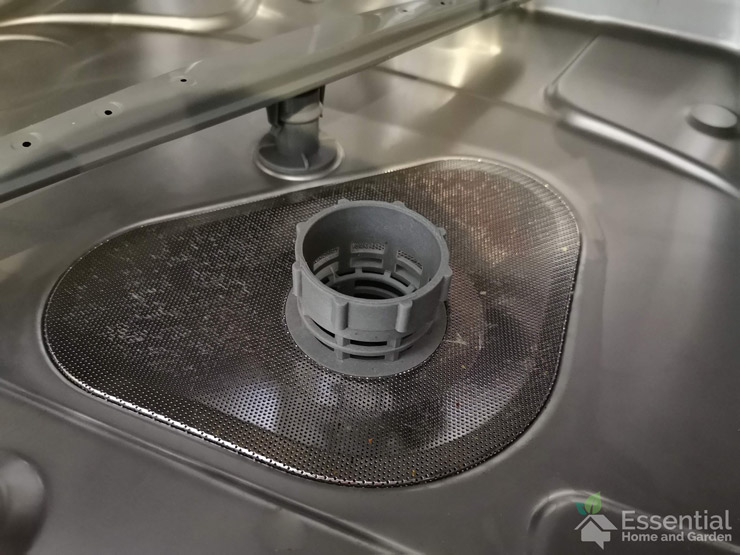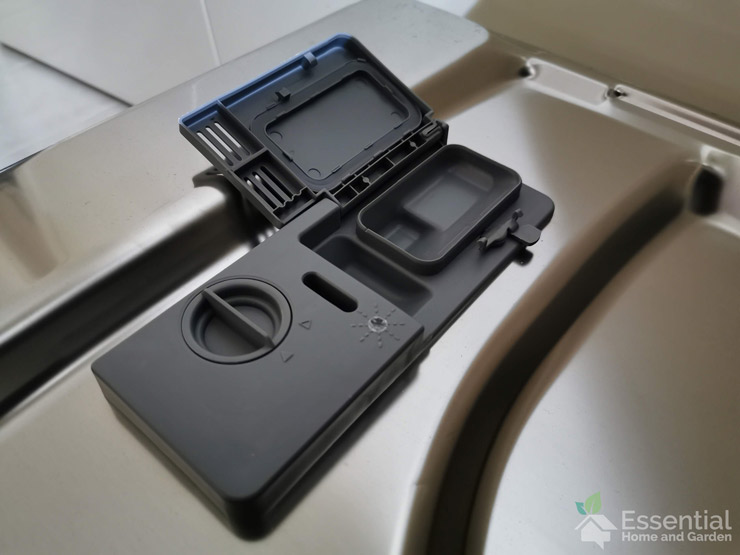Dishwashers save a lot of headache and hassle. They’re one of the most requested apartment and home amenities because they are such a time saver. But, if you’re dishwasher is not cleaning, and you’re forced to rewash your dishes by hand, then you’re not saving any time at all.
Nobody wants to open their dishwasher expecting shiny glasses and sparkling dishes to be greeted with grease and grime from last night’s lasagna still coated on their dinner dishes. Once your dishwasher gets clogged or it starts to leave a residue on your once-pristine dishes, it’s time to start investigating the source of the problem. Luckily, it’s unlikely you need to rush out and buy a new dishwasher. Sometimes it’s a simple matter of cleaning your machine.
You would think a machine made to clean would stay clean itself, but that isn’t true. Just like your shower needs to be cleaned consistently so you can get clean, or your washing machine needs to be cleaned so your clothes can get clean, so too, does your dishwasher. If your dishwasher is not cleaning, then sometimes a simple cleaning will do the trick. Other times though, it takes a little elbow grease and some simple steps to fix the problem. Read below to troubleshoot your specific problem and learn when it’s time to call in a professional.
How a Dishwasher Works
In order to understand what the problem could be, it is first important to understand how a dishwasher works. It a simple machine with a lot of working parts that combine to create the sparkling dishes we want.
While each model is a little different, the basics of how a dishwasher works are as follows:
- Water fills the basin at the bottom
- The water is then is heated to the desired temperature
- The hot water is sprayed through spinning jets onto the dishes
- Detergent is dispensed at the right time to dissolve the grease and food particles off of the dishes
- The dishes are rinsed, the water is drained, and if user-selected, the air is heated to dry the dishes
That seems simple enough, but it’s important to remember that all of this is controlled by a tiny computer. Dishwashers, particularly the newer ones, have various settings to change the temperature of the water, the pressure of the jets, and the length of each cycle.
Some machines even monitor how dirty the water is and rewash the dishes if the water is registering as ‘too dirty’. All of these moving parts and options means more things that can malfunction.
Common Causes Of Dishwasher Not Cleaning
Oftentimes, a visual inspection of the dishwasher is a good place to start when diagnosing the problem. If you immediately notice residue or build up, then a thorough cleaning is in order. If there is water collected at the bottom, then maybe the filter or drain hose needs to be cleaned.
Just like a regular maintenance check on your car to keep it working in tip-top shape, regular maintenance for your dishwasher when it’s not cleaning is important. Don’t forget to check your dishwasher manual to ensure you are using the right detergent, the right setting, and the loading the dishes in an optimal pattern.
*****Safety Note*****
It’s important to remember to turn off the water and unplug the appliance before doing any repair work on your dishwasher.
Scale and Residue Build-Up
Dishwashers use tap water to clean the dishes, so if your tap water is anything but pristine then there will be mineral build-up and your dishes will appear spotty and unwashed. All tap water has some combination of calcium, lime, and iron which can contribute to scale and residue build-up. You’ll know you need to clean the inside of your dishwasher if you notice a pale, chalky residue or an orange, rust-colored residue on the walls of your dishwasher.
How to Remove Scale and Residue Build-Up
- Pour 2-3 cups of white vinegar into a plastic cup and place into the bottom rack of your dishwasher. An alternative to this is to just pour 2-3 cups of vinegar into the bottom of your dishwasher.
- Select the “normal” cycle. Do not choose ‘pots and pans’ or any other specialty cycle.
- Run as normal.
- Air out the vinegar smell overnight by leaving the dishwasher door open.
It is important to remember that more vinegar is not better in this situation. It is an acid and can be corrosive. Another thing to remember is that while it may be tempting, do not add detergent to this cleaning cycle. It is counter-productive.
Check Water Hoses and Inlets
The inlet hose is what feeds water from the supply to the dishwasher. If you wake-up one morning to find water puddled under your dishwasher or dripping from under your sink, check your inlet hose. It likely it needs to be replaced.
You should also check if your dishwasher needs to be connected to the hot water or cold water outlet. Some dishwashers (the most efficient kind) use an internal water heater. These kind of units generally get connected to the cold water tap only.
However, if your model relies on hot water from the tap then having it connected to the cold water outlet will drastically decrease its cleaning performance.
How To Replace a Water Inlet Hose
This repair just takes a bucket, an adjustable wrench, a screwdriver (usually Philips), and a rag.
- Turn off the water supply
- Unscrew the kickplate and identify the correct hose.
- Place a bucket under the shutoff valve under the sink and unscrew the inlet hose.
- On the other end, place a rag under the inlet hose and unscrew the hose from the inlet valve under the dishwasher.
- Replace the hose and tighten with a wrench.
- Turn the water supply back on and check for leaks.
This usually doesn’t require a professional, but if you’ve replaced the hose and ensured they’re an appropriate tightness and still have water collecting under your dishwasher, then it’s time to call a professional.
Spray Arms Blocked
The spray arms are responsible for distributing water to all of the dishes. It uses small holes to force the water through at a high rate of speed, thus ensuring enough pressure gets to all of the grime and food particles. Residue builds up on the spray arms from detergent, minerals in the water, and food particles falling from the dishes. If the spray arms are clogged with limescale and food residue build-up, the water can’t properly spray through the jets, thus not allowing your dishes to get clean.
How To Fix Blocked Spray Arms
Soak in Vinegar
Remove the spray arms from the dishwasher by unscrewing the center bolt. Then using a ratio of at least 1 part water to 1 part vinegar, soak the swing arms for at least 20 minutes. Then, simply wipe with a sponge to remove the debris and rinse with clean water. Visually inspect each opening on the swing arms to make sure they are clean. Reattach the swing arms.
Use a small wire brush or hanger
Sometimes the build-up is a bit more stubborn and needs a little more elbow grease. That is when you want to employ a wire brush to gently scrub the openings clean. Be careful not to scrub the plastic too hard, though, because scratching the surface creates crevices for bacteria to grow.
If the holes on your swing arms are large, then a wire hanger can be inserted into each hole to force out the residue. Rinse with water after cleaning.
Clean the Course Filter
The course filter is designed to catch the big debris that falls off of the dishes, so if you look at the bottom of your dishwasher and see remnants of last week’s steak and potatoes, then it’s time to clean the course filter. It’s easy for grime and debris to build up, so monthly cleanings are recommended.
How To Clean the Course Filter
- Remove the bottom rack of the dishwasher and locate the filter. You’ll be able to easily identify it because it’s the area where the most food has collected.
- Generally, you just need to twist and pull up for the filter to dislodge. However, it is a good idea to consult your owner’s manual because sometimes this step requires a screwdriver and a hidden screw.
- Rinse the filter in warm, soapy water scrubbing with a sponge when necessary.
- Replace the filter when washed and dried.
Check Soap Dispenser is Working
Do you notice that your dishwashing tab is still stuck in the dispenser after a cycle or that you have undissolved liquid soap dripping from the dispenser? Then it might be time to check that your soap dispenser is working properly. There can be a few issues with your soap dispenser, so start with the smallest concern and move up to calling a professional, if necessary.
How To fix the Soap Dispenser
Check the hinge is not clogged with soap or debris
- Visually inspect the hinge and pins for food particles and clean with an old toothbrush and vinegar as necessary
Check that the hinge is not broken or loose
- If the hinge is broken, it
is best call a professional or consult your owner’s manual for specific
replacement instructions.
Clean the drain reservoir
If you notice water in the bottom of your dishwasher then it’s time to check the drain reservoir. This is the area around the filter so it is easily clogged with food and debris. Be careful if you’d had a dish recently break in your dishwasher as this is where broken glass or porcelain would collect.
How To clean the drain reservoir
- Use towels or a wet vac to remove the excess water in the bottom of the dishwasher.
- Locate the reservoir near the filter. Remove any visible food around the drain plug.
- Run a cycle without any dishes to ensure the water drains properly.
Check Drain Hoses and Valves
If the drain reservoir is clean and there is still water in the bottom of the dishwasher, then check the drain hoses and valves. It usually means there is a clog deeper in the lines.
How To Clean the Drain Hoses and Valves.
- Turn off the water supply (not always necessary, but better safe than sorry)
- Locate the drain line and disconnect. Have a bucket ready for any residual water.
- Visually inspect the line and remove any debris. It may be necessary to snake the drain line to remove all debris.
- Reconnect the drain lines, or replace if the valve is worn.
Pump Impellers Blocked
The impeller is the main part of the pump and is responsible for making the water spray into the washer as well as pumping the water after a rinse cycle is complete. If the impeller is blocked, then the dishwasher is completely impotent. Replacing the pump impeller is a slightly more involved process that requires consulting your owner’s manual or calling a professional. However, before calling a professional, check to ensure it’s not just blocked by debris and/or residue.
How to Clean the Pump Impeller
- The pump impeller is generally located in the center of the dishwasher and needs to be able to rotate freely. Visually inspect the impeller to determine if there is hair and/or food particles surrounding it.
- Remove any visible debris and ensure that the pump impeller can rotate freely.
If this simple fix does not work, consult your owner’s manual for more detailed troubleshooting, or contact your local dishwasher repair technician.
When To Call A Dishwasher Repair Technician
When all else fails you might need to do some further research at sites like Dishwasherfaq.com. and if you are still at a loss on how to solve the issue then It’s time to call a professional.
FAQ
Why Does My New Dishwasher Leave Spots on Dishes?
Whether you just got a brand-new dishwasher or you moved into a new place with a different dishwasher, spotted dishes can be frustrating. If you’ve run through our checklist or had professional repairs but are still seeing scum leftover, you may have a water problem.
Hard water – water with higher sediment or mineral contents – left on the dishes can lead to a buildup of those same materials that cause spots and marks on your dishes. Whether your home has soft or hard water is out of your control, but with the right detergent you can combat the problem with your own softening process.
Look for detergents that contain water softeners to help fix your hard water problem so that your clean dishes actually look clean.
If your hard water level is too high and a softening detergent cannot handle it, a water softener system might help. Water softeners are appliances that reduce water hardness by filtering out calcium carbonate. There exist units for both municipal water and well water. For municipal water, any regular water softener system should do. For well water, you should consider how much sediment and iron each water softener can handle. For more info see these reviews of softeners for private wells.
